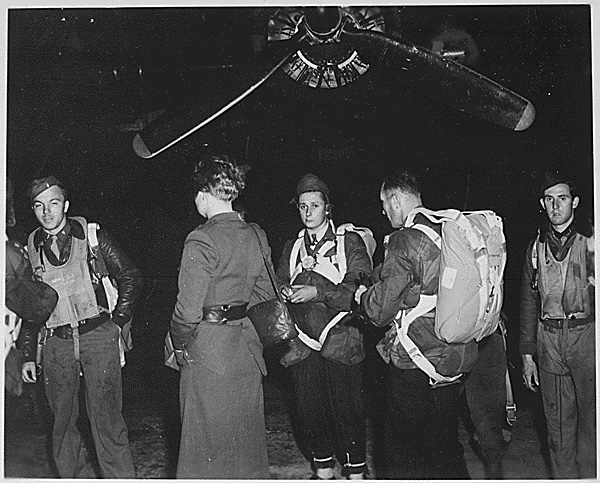In 1857, Sam stumbled into the job that would shape his identity. Aboard a southbound steamboat—part of some half-baked scheme involving the Amazon River and coca—he met a pilot who offered to teach him, for a fee, the “wonderful science” of river navigation. Sam signed on, and between steering and spinning yarns with his fellow-rivermen he expanded his reading far beyond the boyhood canon of “Robin Hood,” “Robinson Crusoe,” and “The Arabian Nights.” Now it was John Milton, Thomas Paine, Sir Walter Scott, and Shakespeare. His journals show him collecting material like a magpie—speech, scenes, characters. During this time, he also picked up his pen name: “mark twain,” riverboat slang for a depth of twelve feet, meaning safe, navigable water.
Then came the Civil War, which sank the steamboat trade and split the Clemens family down the middle. Twain’s war record was brief enough to fit on a cocktail napkin: he joined the Missouri State Guard for two weeks, then bailed. (“I knew more about retreating than the man who invented retreating,” he wrote later.) Rather than fight over slavery, he headed West, to a different kind of chaos—a raw frontier full of men who, like him, were “smitten with the silver fever.”
In Virginia City, Nevada, Sam Clemens found his groove as a newspaperman; calling him a “journalist,” though, might be a stretch. The papers typically had a casual relationship with facts, and Sam delighted in testing how far he could push things. One of his first pieces for the Territorial Enterprise, dated October 1, 1862, included a complete fabrication: a wagon put “through an Indian fight that to this day has no parallel in history,” as he later recalled in “Roughing It” (1872). Reading it in print the next morning, he had an epiphany: “I felt that I had found my legitimate occupation at last.”
By twenty-six, Sam was fully formed—auburn hair, a mustache, and a wardrobe permanently under siege from smoke, whiskey, and the grime of vagabond living. He covered everything, including crime, theatre (“got the merest passing glimpse of play and opera, and with that for a text we ‘wrote up’ those plays and operas,” he later recounted), politicians (“dust-licking pimps and slaves of the scum”), and the mistreatment of Chinese immigrants. His restlessness, his distaste for corrupt and abusive authorities, and his knack for provoking rival journalists had eventually made Virginia City too hot to hold him. In 1864, he relocated to San Francisco, where he placed work in the Golden Era and the Californian—high-toned publications that raised him beyond the category of newspaper hack and toward something recognizably literary.
The West gave him what he needed, but staying longer might have killed him—if not by any of the countless ways the frontier could, then perhaps by his own hand, during one of the depressive spells that sometimes took hold. When Sam set sail for New York from San Francisco, on December 15, 1866, he’d been Mark Twain for more than three years—on the page and, increasingly, in person. He was already angling for a place in New York’s literary scene, aided by friendships with established humorists like Bret Harte and Artemus Ward, who helped shop his work to Eastern editors.
But Twain was outgrowing his mentors. That fall, he’d barnstormed through gold-rush towns, delivering what were loosely called lectures—essentially, standup sets about his travels. Twain was a careful writer posing as a casual talker. The boy who had once listened to enslaved storytellers had become a virtuoso yarn-spinner. Comic monologues paid better than journalism, “and there was less work connected with it,” he later observed. Besides, laughter “was a heavenly sound to me,” he wrote.
The East promised that trifecta writers crave but rarely name outright: money, renown, and prestige, in shifting proportion. New York was no cultural capital when Twain arrived in 1867, and that suited his hustle. As a lecturer, he found a place in the city’s public life; as a correspondent he filed dispatches for various high-profile newspapers. A book was the next step. That year, he published a collection anchored by his story “The Celebrated Jumping Frog of Calaveras County,” and although the book was politely received, its sales were modest—a success he found vaguely humiliating. The breakthrough came soon after, with a roving assignment aboard the Quaker City, a steamship bound for Palestine. Twain chronicled excursions inland from the Mediterranean to Paris and Rome. Gimlet-eyed about the world’s supposed wonders—Parisians and sacred sites alike—his letters found their form in a second book, which appeared in 1869, titled “The Innocents Abroad, or, The New Pilgrim’s Progress.” It was a best-seller, a sensation, and the moment Twain’s voice became not just recognizable but indispensable.
A best-seller wasn’t the only thing that came of the Quaker City cruise. When a fellow-passenger, Charles Langdon, showed Twain a miniature portrait of his twenty-one-year-old sister, Olivia, he was smitten. “To labor to secure the world’s praise, or its blame either,” he later wrote, “seems stale, flat, & unprofitable compared with the happiness of achieving the praise or the abuse of so dear a friend as a wife.” Livy, as he called her, came from a prominent East Coast abolitionist family—cultured, affluent, religious, and wary of the brash humorist now vying for their daughter. Twain pressed his case and finally won their approval. The pair were married in February, 1870.
Within two years, Hartford, Connecticut—where Livy had connections—was his home and his base of operations. The marriage offered Twain not just intimacy but infrastructure: Livy became his editor, his conscience, and his entrée into circles he once mocked. Their thirty-four-year marriage would produce three daughters and a son, who died in infancy. Even as Twain’s home life stabilized, his literary ambitions grew. In 1875, The Atlantic ran the first installment of what became “Life on the Mississippi” (1883). The piece impressed John Hay, Lincoln’s former secretary and a future Secretary of State, who was reared just upriver from Hannibal. “I knew all that, every word of it,” Hay wrote to Twain. “But I could not have remembered one word of it all. You have the two greatest gifts of the writer, memory and imagination.”
When the words were flowing, he hardly noticed the effort—a sure sign they’d dry up eventually. “As long as a book would write itself,” he admitted, “I was a faithful and interested amanuensis, and my industry did not flag; but the minute that the book tried to shift to my head the labor of contriving its situations, inventing its adventures and conducting its conversations, I put it away and dropped it out of my mind.”
What Twain sought was something like automation. He wanted to work without working, a desire hard to square with other writerly particularities of his: he was obsessive about word choice, especially when rendering dialect. And yet he often deferred to others—most often the women in his life—when it came to editing, allowing them to strike what they would.
His writing style was inseparable from the shape his books took, and his fictional instincts were more episodic than architectural. “A man who is not born with the novel-writing gift has a troublesome time of it when he tries to build a novel,” he once observed. “The Adventures of Tom Sawyer” was an illustration. Twain wrote much of it in the summer of 1874, as he and his wife prepared to move into a flamboyant Gothic mansion in Hartford, along with two young daughters and a household staff. But the life style came with costs, and one way to raise money was to advertise a book to prospective subscribers, who would pay for it in advance. Then you just had to write it.
At one point, work on the manuscript stalled completely. His tank, he wrote, “was empty; the stock of materials in it was exhausted; the story could not go on without materials; it could not be wrought out of nothing.” The freeze came around page 400—a reminder of the economics shaping Twain’s method. With subscription publishing, bulk helped justify the price. As his biographer Justin Kaplan put it, “It forced the author to write to fit and to fill . . . and it conditioned him to think of his writing as a measurable commodity, like eggs and corn.”
Published in 1876, “Tom Sawyer” was printed and distributed in the U.S. by a venture Twain partly owned. It sold respectably but not at the level he’d hoped. The Atlantic called it “a wonderful study of the boy-mind”; others dismissed it as a series of sketches rather than a true novel. Sardonic in tone—its moralists are hypocrites, the church oppressive, and only the rebels are appealing—the book still plays it safe: slavery is all but absent from this version of Hannibal.
Twain worked on “Huckleberry Finn” that summer, at a retreat in upstate New York. But the writing, again, proved fitful. He wrote a few hundred pages before pausing the project around 1880, unsure how to proceed. He was also busy chasing fortune: steam pulleys, marine telegraphs, and the Paige Compositor—a typesetting machine that promised riches and delivered bankruptcy. As Chernow notes, Twain “raged against plutocrats even as he strove to become one.”
Premium IPTV Experience with line4k
Experience the ultimate entertainment with our premium IPTV service. Watch your favorite channels, movies, and sports events in stunning 4K quality. Enjoy seamless streaming with zero buffering and access to over 10,000+ channels worldwide.

















